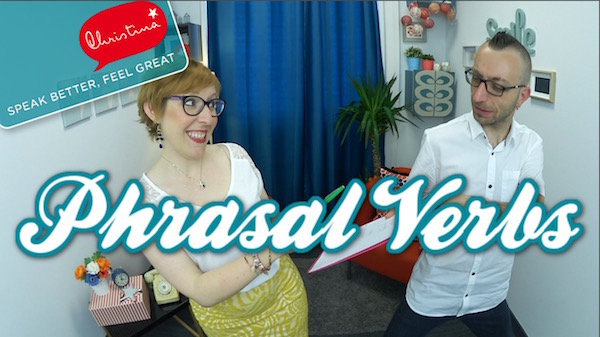
Translating everything in your head feels slow and frustrating. It’s time to stop!
You know the deal:
- You start by thinking about what you want to say in your head, in your own language…
- And then you translate it to your new language…
- And finally you say it!
But that’s a lot of work, and it’s slow.
You don’t do that in your language. You just think about an idea, and then the words arrive naturally.
Well, you can do the same in English. That’s a big step forward, if you want to Master Real American English (or simply speak English with confidence!)
Here’s how to stop translating in your head before speaking in English.
Index:
1) Stop Translating: What I learned when I first arrived in France
2) Stop translating: Talk to English people
3) Stop Translating: Practice English with yourself
4) Stop Translating: Have engaging fun in English
1) Stop Translating: What I learned when I first arrived in France
When I arrived in France, I didn’t really know how to speak French.
I knew some verbs, I knew some conjugations… But I always had to think first about what I wanted to say, then I had to go through all the conjugation in my head, and then prepare a sentence, and then say it while being careful of the pronunciation…
And usually by the end of all of this, people were already talking about something else entirely!
I realized that if I wanted to keep up, to stay in the flow of the conversation, I really needed to stop translating everything. I needed to say what I wanted to say, in French, without taking the time to think in English first.
There are some techniques to learn how to start doing this, if you want to start talking in English more naturally.
And the thing is, it will help you speak better English. Because translation always feels a bit unnatural in the end. We don’t make sentences the same way in different languages!
Now you’ll be fully able to use common expressions and everyday sentences.
2) Stop translating: Start switching your brain to English
The first technique to start thinking in English, without translating in your head, is: Start trying to think only in English. Don’t worry right now if you’re making mistakes. It’s only thoughts, no one hears them! But more seriously, it’s better to make a few mistakes, but get the habit of thinking directly in English.
What you’re trying to do here is train your brain to use English automatically. To switch your brain over to English!
The extra mile:
Immersion can make you stop translating in your head, but you won’t learn everything magically. I tell you more with My Immersion Story in France: Immersion wasn’t enough for me!
But it’s still very useful. And that’s the point of the Virtual Immersion in my course Master Real American English.
3) Stop Translating: Practice English to yourself
Practicing English with yourself is a big step to start thinking in English.
Talk to yourself when working from home! Speak out loud, in English!
Does it sound weird? Yes. Is it effective? Also yes!
You will find that some sentences come up more often. And soon, you’ll say them without translating from your own language.
If you can’t talk to yourself out loud, you can also try and think these sentences to yourself.
You only need to stay consistent. With regular practice, words will come to you easily in English, and then whole sentences.
Being consistent is difficult though. That’s the main problem.
You can use live sessions and online group conversations to improve your long-term motivation with programs like Master Real American English, or you can try to keep learning on your own.
Let’s see how you can practice and keep your motivation in the long term.
** The extra mile **
You can start using more phrasal verbs with Get for example!
4) Stop Translating: Have engaging fun in English
You can practice thinking directly in English by having engaging fun.
There are two things here that will help you.
First step: You can make English entertaining. Just have fun!
This means watch movies in English, even with subtitles. Listen to songs in English. Read books in English. Go on Twitter and follow interesting English-speaking people. Pick stuff that you like, about your hobbies or about topics that will interest you. There’s a lot to learn!
Second step: make it engaging. It won’t work if you’re only passive. But if you create something, if you actually practice using English, you’ll find that it becomes much easier quickly. If you can talk about it with other people (like in Master Real American English), that’s wonderful! Or you can try to remember it by yourself.
For example, for:
- Movies: Learn the most iconic lines, in English. Or the best jokes. Or even just a bit of dialogue that sounds cool! Repeat them to yourself. Or you can try to use them in a conversation!
- Songs: When you catch a song you like, find the lyrics. What do they mean? Can you learn the chorus? Sing the words when you’re taking a shower.
- Books: Again, when you read a good line or a good joke in English, learn it. Remember it, and try to use it when you’re writing something.
- The Internet / Social media: How do people talk on the Internet, in the communities that you find? Start responding to thought-provoking posts, and try to fit in. You’ll find that people often use some sentences. Soon, you won’t have to translate them in your head before using them!
In all these situations, your brain works in the same way. By using and repeating cool or useful sentences, you’ll create “shortcuts” for them in your memory.
You won’t have to translate them in your head. These sentences will just become part of the tools in your mental language toolbox, that you can use quickly and confidently.
As you practice, you’ll get more and more sentences in that toolbox, and you’ll be able to combine them together to speak anything with confidence.
And that’s when you know you’ll stop translating in your head.
**
The extra mile:
It’s also a great way to start learning Advanced Vocabulary. Learn more in this lesson: How to get Advanced Vocabulary in English.
**
Of course, you can start with some very common sentences and expressions. That’s the best start for your English conversations.
For example, you can learn:
- 5 everyday English expressions you never learned in school
- 5 phrasal verbs in English that you need to know
- American Expressions: 6 strange things Americans say. (This episode is full of “insider chunks”!)
I made a short playlist on YouTube with these lessons.
You can watch it now, and I’ll see you in the next video!
More good stuff...
Click the image to learn more








I really like this video it’s very important I just came to learning another technique to speak Americans English thank you Christina we love you
Hi Salif, Thanks so much and you’ll see that you’re going to learn a lot about speaking English here! I promise!